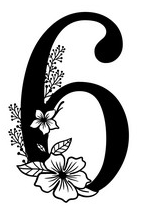Director: Tommy Lee Jones
Stars: Hilary Swank, Grace Gummer, Tommy Lee Jones
A western with prominent female characters? It’s not unheard of but, by and large, the genre is foremost perceived as a boy’s club, as much as the gung-ho WW2 flick or the all American baseball movie. Women in westerns are usually either prostitutes or nagging wives. A sorry state of affairs. So when one comes along offering more complexity to its women, it’s a welcome occurrence. The Homesman is getting a lot of mileage from it’s fore-fronted women and rightly so. There are a clutch of fine performances here and, for quite a while, an engrossing and pleasing variation on traditional expectations, albeit one that ends frustratingly shy of feeling revolutionary.
Directed by Tommy Lee Jones, who also stars, The Homesman is driven by a powerhouse performance from Hilary Swank as the bold, devout and impassioned Mary Bee Cuddy. Rejected by eligible men in her rural Nebraska home for being ‘bossy’ and ‘plain’, she is nevertheless respected by the community; as much a man as anyone else to paraphrase John Lithgow’s minister. Credit to her, she is a strong and capable woman in tough times; keeping a farm, proposing to men of inauspicious worth who don’t have the gumption or inclination to broach the topic themselves, and generally showing more courage and fortitude than the distinctly lacking male specimens that surround her, Nevertheless, she is viewed as a spinster at 31. Such is the currency of marriage and tradition.
Three local women have been driven mad by circumstances and mistreatment. A parish meeting outlines a plan to transport them many miles east across country to sanctuary in Iowa. Once again the local men are found wanting. Mary Bee takes on the responsibility. Cooping the women up in a carriage that resembles a travelling cell, her journey is quickly augmented by the discovery of George Briggs (Jones), left for dead in a noose, perched precariously on a mule. Briggs is a drifter, a deserter, an opportunist and a scoundrel, but Mary Bee sees him as a valuable resource for her trip. She saves his life in exchange for his assistance, and bribes his tenuous allegiance.
And so The Homesman sets out east (a canny inversion in itself), playing in large part as an odd-couple road movie. That Swank’s Mary Bee remains the authoritative figure in the relationship is as refreshing as it is delicately balanced. In line with the traditions of the ‘buddy movie’ her and Briggs’ journey is one of slowly built mutual respect. It’s not a million miles away from the relationship between Rooster Cogburn and Mattie Ross in True Grit. Jones plays craggy old reprobate to Swank’s well-spoken beacon of righteousness, yet here the dynamic between the two feels more pointedly challenging.
Briggs repeatedly asserts he is only in it for the money (all of $300, not much for such danger, even then), yet his very insistence on this belies other motives. Perhaps Mary Bee’s structure and protectiveness is something he has missed in his life? A buried need. He is repeatedly afforded opportunities to betray or abandon her and the crazed women, yet he remains, happy to assign to her lead (though jovially quarrelsome to boot). Mary Bee herself, meanwhile, carries her mission like a millstone, yet beneath this the weight of tradition and expectation also hangs heavy. Independent as she is, she still longs for the conformity and security that society has asked her to expect.
The three crazy women – more than once referred to objectively as cargo – are not inconsequential in this. Grace Gummer’s Arabella Sours is the more prominent of the three, nursing a doll following the natural deaths of her three children in quick succession. Miranda Otto, stark eyed and as mute as her fellow travellers, manages much with little as Theoline Belknap, while Sonja Richter puts in a committed, physical performance as Gro Svendsen. All three are mute from their madness; a pointed but effective reminder of their smothered voices in the time period and culture.
Jones’ direction is assured, but not showy. There’s a simple elegance to his work. He creates impact with great economy, favouring the considered tableaux on many occasions, allowing the viewer to catch up on the disparate elements in his frame, sometimes abruptly. Overall this is a confidently staged picture, one which, at times, suggests he picked up a few tricks from the Coens on No Country For Old Men.
As refreshing and invigorating as Swank’s perceived lead role here is however, Jones is still afforded top billing, and a particularly unexpected swerve at the end of the second act reveals why. It’s usually a fine thing to be surprised by a movie, but in this instance that thrill is tempered by how formulaic it renders the remainder of the picture. Having taken some bold steps away from convention, The Homesman spends its final half hour quietly shuffling back in line. The anchor we’d taken for granted isn’t as we’d thought, and we’re suddenly left adrift.
The film attempts to lessen this feeling with a flurry of guest stars (enter James Spader, Meryl Streep and even True Grit‘s Hailee Steinfeld – all making brief appearances, the latter presumably trying to make up for Ender’s Game), but they feel like little more than baubles hanging on the slender branches of what remains. The final scene of the film cuts the deepest (not a bad thing), as memory proves short-lived and the folly of masculine carelessness reasserts its position. We’re headed west again. It’s a pill bitter with truth, but it doesn’t make it any easier to swallow.
Episodic, occasionally special (especially when playing with genre assumptions), The Homesman is a welcome return for Jones to the director’s chair, but it’s story feels sadly compromised at the finish line. Though that’s probably the point.

